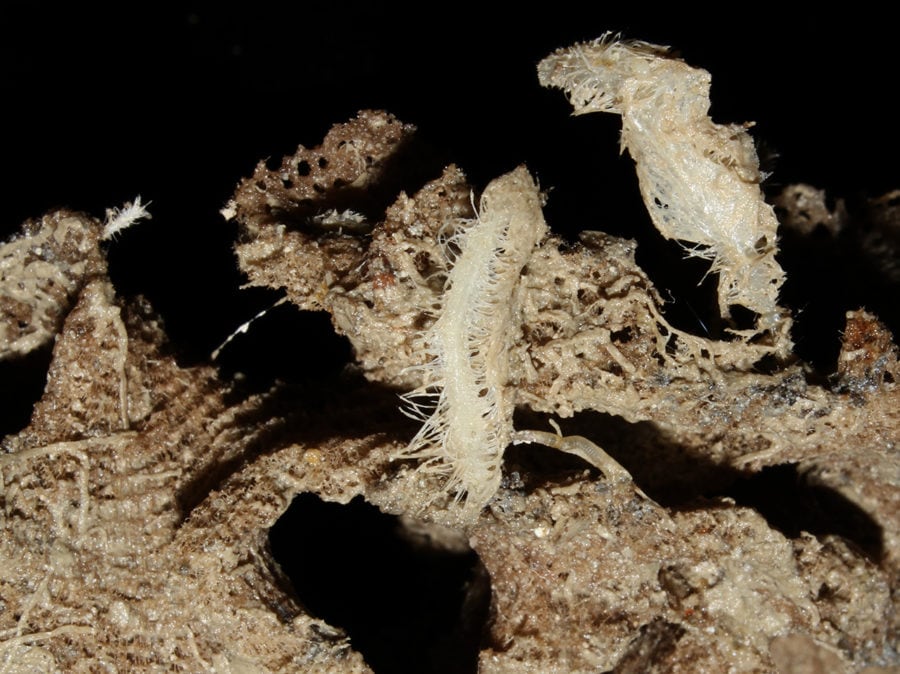17 new species of carnivorous sponges described from Australian waters

Deep-sea sponges have quite the appetite, feeding on various crustacea up to 4000 metres below the ocean’s surface.
Previously, only three species were known to Australian waters, but a new paper published in the Journal Zootaxa describes a further 17 new species.
Considered as the ‘largest haul of new carnivorous sponges found’, the new species were all discovered during the CSIRO RV Investigator voyage in 2017.
Queensland Museum sessile marine invertebrates collection manager Dr Merrick Ekins, the foremost Australian expert on carnivorous sea sponges, was aboard the deep-sea expedition off the east coast of Australia, collecting sponges and has spent the last three years describing them.
“I was so excited about the first new species, but as the days went on there was another one and another, and another one,” Merrick says. “We just kept finding them.”
Carnivorous sponges all belong to the group known as Cladorhizidae, which unlike their relatives that filter feed, have adopted a carnivorous lifestyle to cope with their deep sea habitat. They can be anywhere between 2-20cm long, greatly differing in appearance; some resembling feathers, while others look like parasols and lollipops.

“I had a lot of fun naming them. I named one after a shark because it had these amazing fang -like spicules (small needle-like structures that make up the skeleton of a sponge)… another had funky spicules that look like something out of an Escher drawing, so I named it after Escher,” Merrick says.
Merrick will be joining an expedition in the Coral Sea in August on the RV FALKOR that has an ROV (remotely operated underwater vehicle) onboard to take photographs.
“Currently, we don’t really know what they look like underwater, in terms of what their colour and shape is. We only know what they look like out of water, and it can be very different.”
Merrick says around 197 species of carnivorous sponge have been discovered in the world’s oceans, “and this one expedition has discovered 17, which is pretty amazing.”
And it’s likely the number of species in Australia will go up as Merrick prepares to publish papers describing four new species from the Great Australian Bight and the Coral Sea.
Like so many deep-sea creatures, carnivorous sponges are threatened by trawlers. Merrick says that the scientific research conducted on the CSIRO RV Investigator voyage isn’t just important for finding new species, but monitoring the health of those ecosystems.

